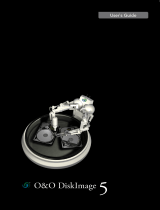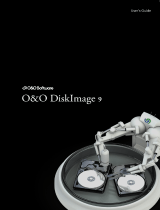
About O&O Defrag 14
O&O Defrag - 2
Overview of new and known functions
Besides the continuous maintenance and enhancement of the existing program components, you will find several addi-
tional new and helpful features in O&O Defrag 14.
Simplified user interface
The user control was adapted to the most frequent application cases, so that the most important jobs will be executed
intuitively. All basic control possibilities, as well as the unique functions of O&O Defrag can be accessed with just one
click.
QuickStart wizard of O&O Defrag
The QuickStart wizard allows you to automate defragmentation with just a few mouse clicks right after the first start of
O&O Defrag or at a later time. Once defined, you will never have to worry about the optimization of your hard disk
again. Everything will be handled by O&O Defrag in the background. The default settings we propose are adapted to
the needs of most our customers.
O&O ActivityMonitor
The O&O ActivityMonitor periodically determines the system load. It controls the performance demand of O&O Defrag
during a defragmentation and adapts it to the current state. You can thereby work undisturbed while your system is
being defragmented in the background.
Automatic optimization
Thanks to the new automatic optimization in O&O Defrag, there is no need to configure the defragmentation manually.
It is activated automatically after installation and optimizes your hard disk in the background; without your computer los-
ing any of its performance.
Advanced report management
The new report function lists the defragmentation reports after their date of creation and groups chronologically. In that
way, you will always stay informed on the performance development of your computer over time.
Optimization for all makes of Solid State Drives (SSDs)
For the first time, O&O Defrag enables you to optimize all makes of SSD drives. Using regularly scheduled ATA TRIM
commands, an SSD will be kept informed of those hard disk areas that are available for new data. Instead of continuing
to save the contents of data that’s no longer needed, the SSD can now use those freed areas for a drive-internal opti-
mization of its data management. As a result, the SSD is able to process accesses significantly faster, and wear out
on flash chips is kept to a minimum.
Filing drives into zones
The division of drives into zones enables the logical separation of the data into performance critical and non-critical
files. A special algorithm makes sure that the data on the disk is optimally organized after defragmentation. Files are
organized and moved into zones depending on their intended use and the access frequency. For instance, system and
program files, which need to be accessed very quickly, are separated from other data like documents and downloads.
By the division of files according to their write frequency, it’s possible to intelligently prevent fragmentation. Thanks to
this logical grouping, program and system start times are shortened, future defragmentation runs faster, and new frag-
mentation can be prevented.
Three adapted optimized methods for defragmentation
Three methods - Optimize, Optimize/Quick and Optimize/Complete - facilitate the selection of the most beneficial
defragmentation for a specific purpose. These new methods group your data into zones and combine optimally with the
older O&O Defrag methods. These are, of course, still available whenever you disable zone filing.






























